#upper town of thessaloniki
Photo

the light at the end of the tunnel: is a train.
52 notes
·
View notes
Text
17 places to see in Thessaloniki, Greece for starters
Thessaloniki is a city loved like few others. It is the second largest city in Greece and it is often referred to as the Capital of the North, Cultural Capital or Co-Capital to Athens, out of the love Greeks have for it. It offers a mix of ancient and medieval history, a diverse past, romanticism, vibrant nightlife, relaxed lifestyle and delicious cuisine that few can resist. There are countless things to see and do in Thessaloniki but these are the first 17 you have to tick off your list.
1. The White Tower
The landmark of Thessaloniki was built in 1535 by the Ottomans and was used as a prison that was originally called Tower of Blood. Allegedly, it got its current name after a Jewish prisoner was freed and agreed to paint the tower white. The tower hosts a gallery and offers tremendous views to the city and the Thermaic Gulf from its top.
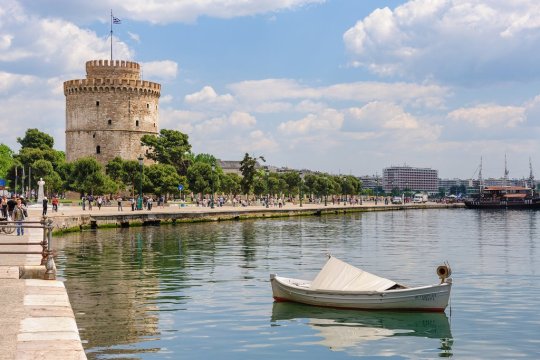
2. Aristotle Square
This is the most popular square in Thessaloniki, with beautiful and characteristic architecture like in Olympion movie theatre and Electra Palace as well as plenty of pretty cafes, bars and retail shops.

3. The harbour
The port of the city has the flair of everything old that has to adjust to the passage of time. Large industrial structures, strong artistic presence with the Museum of Cinematography and the Museum of Photography and the lively energy of the students who love to relax in this spot all together compose a special scene.
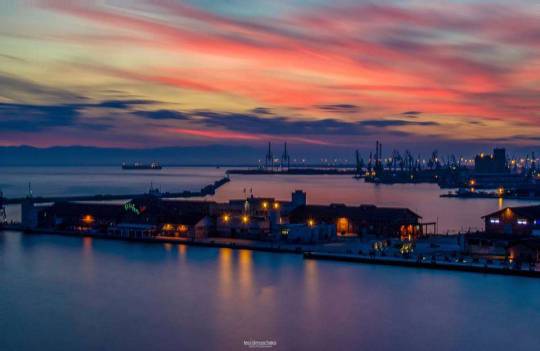
4. Alexander the Great statue
How could Alexander be far from his half-sister, Thessaloniki? Alexander’s statue in Thessaloniki is the largest in Greece and was sculpted in 1974 by Eu. Moustakas.

5. The Umbrellas
One of the most insta-popular spots of the city, the Umbrellas is a modern art composition by artist Giorgos Zoggolopoulos in 1995.
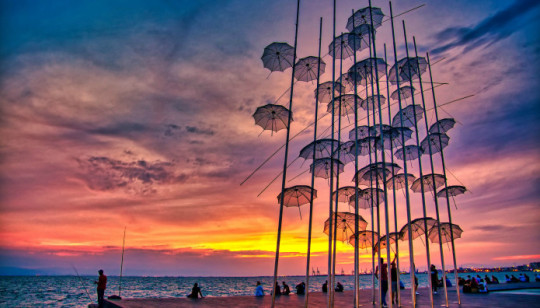
6. The New Waterfront
The New Waterfront is a wide and long walking and cycling park starting from Macedonia Palace Hotel and reaching the Concert Hall. It is popular with everybody, young and old, couples, athletes, cyclists, children and was recently created by architects Prodromos Nikephorides and Bernard Cuomo.

7. Nea Krini
Nea Krini, in the eastern suburbs of Thessaloniki, is a great place to unwind and try seafood and fish in the local restaurants. A stroll in the Aretsus Marina is a must too.

8. Saint Demetrius Church
This is an emblematic Palaeochristian church, with a very long history, where the relics of Saint Demetrius are kept. Demetrius is the patron saint of the city, because his nameday celebration is in 26 October and incidentally that was the day the city was liberated from the Ottoman Empire. Besides the saint’s remains, the church has crypts and catacombs beneath and is a UNESCO monument.
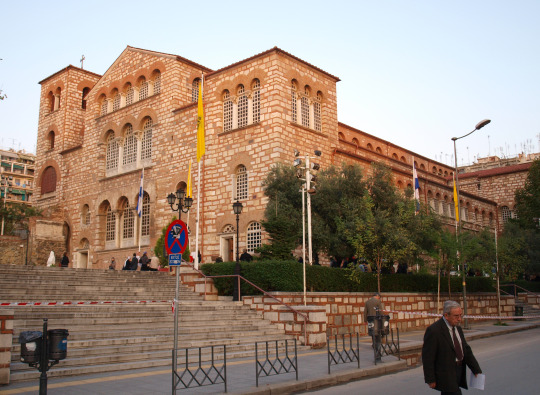
9. Saint Sophia Church
Another UNESCO monument, Saint Sophia church was built in the 8th century AD and is a prime example of Byzantine architecture.
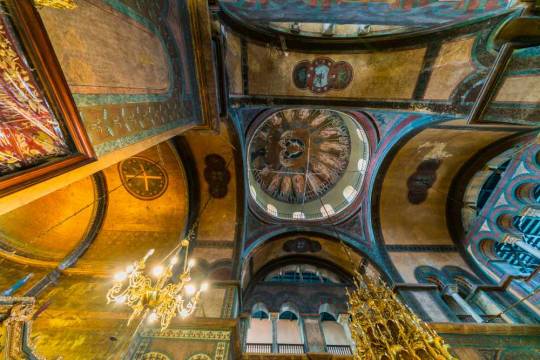
10. OTE Tower
Built in 1970, this 76 meter tall tower was originally OTE’s pavilion in the Thessaloniki’s International Fair. On its top there is a rotating roof cafe from which you can enjoy views to any angle of the city.
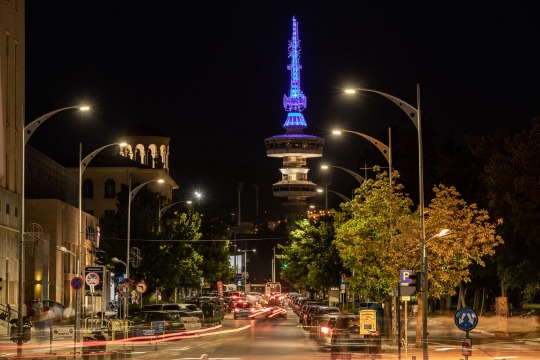
11. Turkish Baths
Thessaloniki's Turkish Baths might be the best preserved in Greece. They were built in 1444, often with materials taken from Christian churches and functioned as baths until 1968.
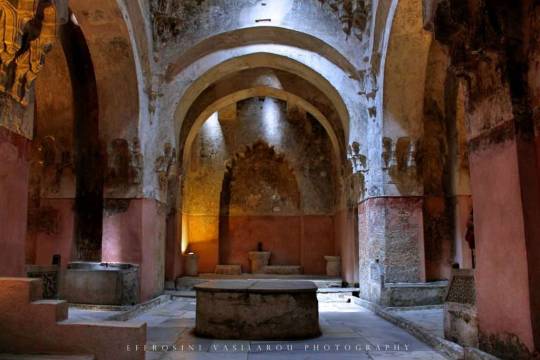
12. Arch of Galerius
Also known as “Kamara”, this is the most common meeting point in the city. Kamara is the surviving arch of the palace the Roman Emperor Galerius built in order to celebrate his victories against the Persians.
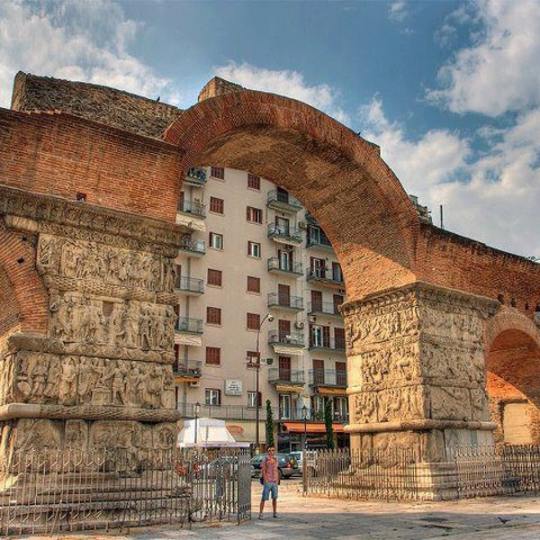
13. Upper Town
This is the elevated old town of Thessaloniki, surrounded by the fortresses. Upper Town is great for a visit in the evening and at night and it offers spectacular views to the city and sea plus many options in seafood and traditional coffee shops.
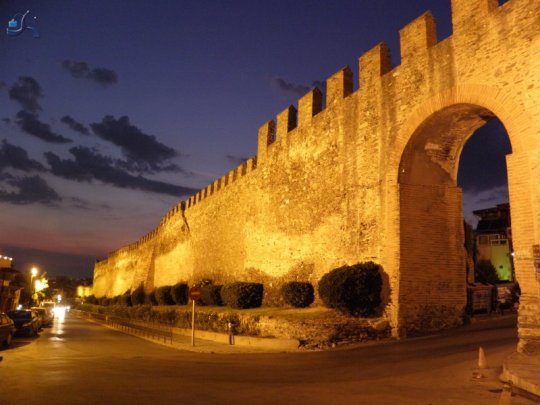
14. Rotunda
Rotunda was built in the 4th century AD by emperor Galerius and it was meant to be a Pantheon or a mausoleum. Galerius died early though and the building was turned into a christian church while in the 16th century the Ottomans turned it into a mosque. Rotunda suffered a lot from earthquakes but large parts of its original mosaics are rescued.
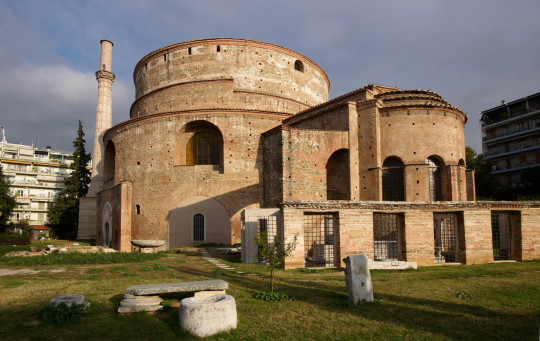
15. Ladadika
A district where oil was sold, and where prior to 1990 the sex workers would be found, earning such a reputation that songs were written about this, has nowadays become one of the hotspots of the city with vibrant restaurants, cafes, bars and hotels. Hence its vibrant lighthearted yet vaguely underground aesthetic.
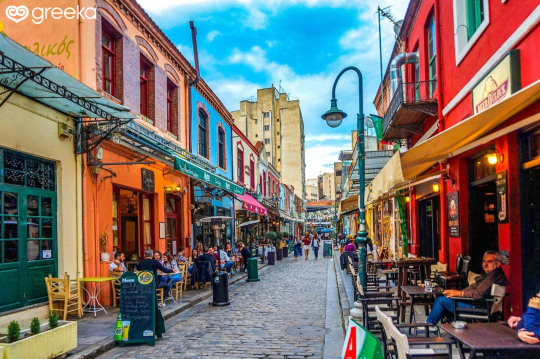
16. The Archaeological Museum of Thessaloniki
It is the largest archaeological museum in Northern Greece and one of the biggest in the country. Its exhibits are of huge significance and come mostly from Thessaloniki and the greater region of Macedonia. It covers prehistoric times until late antiquity.
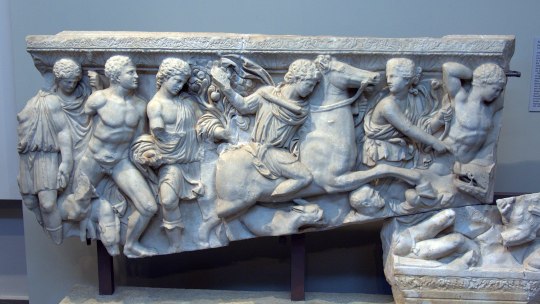
17. The Museum of Byzantine Culture of Thessaloniki
It is one of the most important Byzantine museums in Greece and it is also acclaimed for its design, a notable example of Modern Greek architecture. The museum covers all aspects of everyday life in the Byzantine Empire, the ecclesiastical art, the Byzantine Emperors and the life in the imperial palace as well as the Byzantine legacy in Modern Greece.
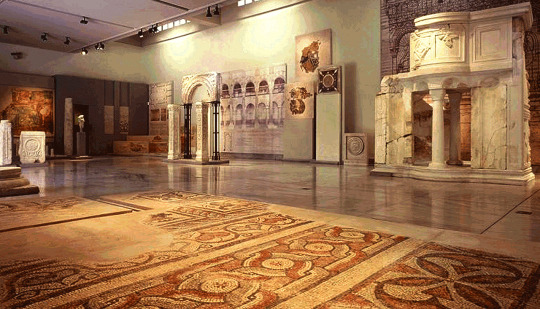
Original source in Greek (made some modifications with the recommendations)
#greece#europe#city#travel guide#tourist guide#travel#wanderlust#thessaloniki#macedonia#mainland#white tower#ote tower#ladadika#saint Sophia church#saint Demetrius church#rotunda#arch of galerius#Turkish baths#upper town of thessaloniki#Aristotle square#archaeological museum of thessaloniki#museum of byzantine culture
188 notes
·
View notes
Text

Thessaloniki, View from Eptagyrion
#erasmus in thessaloniki#thessaloniki#greece#upper town#ocean view#view#akropolis#acropolis#heptapyrgion#Επταπύργιο#Festung#Byzanz#byzantium#greek history#greek#greek architecture#greek aesthetic#greek posts
35 notes
·
View notes
Photo
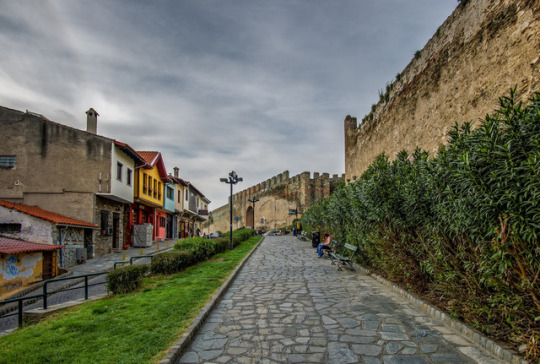
1 note
·
View note
Photo

Upper Town - Thessaloniki
#thessaloniki#ano poli#Upper Town#night#woman#walking#world that he wants#chris kosides#photography#lights#silence#colour
12 notes
·
View notes
Text
Lapping it All Up
It's Sunday morning and time to part company with Sue and Peter. It was a fun 5 days. We are heading to Helsinki and they will drive the car back to Riga where it all commenced. They are stopping the night at Parnau. Rainy day again as we said our farewells and they dropped us at the ferry terminal. Saw an amusing sign at the terminal which pointed to the very short term car park (15 mins). It said " Kiss and Sail" which was very apt. We had laughed our way through Latvia and Estonia with them and had covered a bit of ground in those 5 days. Despite it bucketing down Liz did a quick sortie after they left to take a photo of the sign. This led to one of those amusing moments. Something you very rarely see Liz do - "run". If I said a sort of Donald Duck style of running I might be close to the mark. Possibly even being flattering. There is a lot of action, arms flapping, feet akimbo, head rolling from side to side and forward momentum is not speedy. The ferry ride from Tallin to Helsinki takes about 2.5 hours. We had basic tickets so it was first in best dressed for seats. A number of bars and cafes on board and as soon as boarding started the regulars made for prime positions. We had to stow our luggage and were given a bit of a bum steer, in terms of where to store them, by one of the staff so a lot of seats had gone by the time we were free to look. Anyway we snagged a couple of uninspiring but fine seats in a a cafe and settled back for an uneventful trip. Despite the rain it was petty calm and we had a snack, read and blogged. Interestingly they had a couple of stages with musos performing. I might expect that on a cruise ship in the Bahamas but not somehow on a couple of hours ferry in the Baltics. One stage was on the upper deck where quite a raucous bar was in full swing. The wind and rain were coming down on the uncovered end though plenty of cover. Singer was flat as a tack and slaughtered Ed Sheerin's " A Girl Like You" (a bit of a holiday anthem as you hear it a lot in beach bars etc over here). The audience didn't care. They were all getting tanked. Another singer was close to us in a neighbouring area and he was playing the guitar and performing solo with some electronic instrumental help. Not too bad, middle of the road - Eric Clapton, Jonny Cash etc but more importantly his voice I was better. I strolled around looking at the duty free shop where the Finns on board were fairly determinedly stocking up on booze which is much cheaper in Estonia than Finland. This included people with several slabs of beer. Liz noticed that many of those slabs were being consumed on board. It was certainly a lively ship. Trip was easy and we worked out we could get a tram into the city and quite close to our hotel from the ferry terminal. A bit of a scramble getting off but we were in no rush so took our time. Slight problem though, it was raining quite steadily. We headed for the tram stop which was close by but in a master stroke of planning the ticket machine was exposed to the elements and quite a queue. This included the guy who had no idea what to do, did not appear to have the right money (possibly any money), whose credit card would not work and who consequently held us all up in the hissing rain for 5/6 minutes - could have been longer. This on top of the 7/8 mins we had already been waiting. In the end the couple behind paid for him. Liz was now huddled under the tram shelter while I stood out there in the pak-a-mac. No point in two of us getting wet(ter). By the time I got to the front of the queue the wind had set in and rain was horizontal so jeans and shoes pretty soaked. Guys behind (equally wet) who seemed local provided some guidance on the payment process but even they stuffed it up a bit so another minute or two of soaking. Anyway at last I had two tickets in my hand but the various delays meant we just missed a tram by about a minute so had a 6/7 minute wait for the next one. Still, under some shelter, though I was drenched. We duly trundled off for the 10 minute ride and I couldn't wait to get out of my jeans and shoes. I made the mistake of sitting down which was even more uncomfortable so quickly sprang up. Anyway the Hotel Helka was only about a 10 minute walk from the tram stop. Liz did a good job of getting us off at the closest stop and guiding us home. At last, out of that gear and into the shower. All was well and Hey! We were in Finland. Time to explore and we headed off into town. Basically heading for the main square and market square. First impressions were that it was more modern than Riga or Tallinn and a little less atmospheric. Plenty of shopping malls, cafes etc. and even the older buildings which were often quite attractive, of the the six storey terrace variety, did not seem that old. Made our way to market square where there were a number of stalls selling local "products". Very soft hats, wood carvings, paintings, the usual fridge magnet memorabilia stuff but also fox, wolf and reindeer pelts and extremely sharp hunting type knives in scabbards - not sure exactly what the purpose of them was. The market was starting to close but quite a few stalls selling food were in full flight. Now around 4.00pm and we had only snacked post breakfast so were hungry. The offerings were often local delicacies and we couldn't resist sharing a plate of fried Vendace (very similar to sardines) with garlic sauce. Just on a paper plate, pretty decent serve (30 or so smallish fish) you eat the lot, heads and all, and we wandered around happily chomping on them. Very delicious and sauce not too garlicky at all but tasty and needed. It was sun over the yard arm time and we looked for a decent pub/ venue to have a drink. Plenty of craft beer here though we had heard horror stories about the price of alcohol. We couldn't quite find what we were looking for in terms of character but settled on a cafe/bar and sat outside. Rain had stopped but not exactly balmy. After that we continued to wander through the back streets though being Sunday a lot of places closed. Did find a good looking Pho joint which was a possibility if all else failed. Liz loves her Pho. We headed back for the hotel. The Helka is a little boutique hotel and quite quirky. They had a little Swiss style bird house (no birds) that you could deposit your keys in when you left. The coffee mugs in the room had an inscription inside the rim which read " Stolen from Hotel Helka" Staff very friendly and a range of nice touches. We determined that dinner would be in their relaxed little bar/cafe area downstairs. Some good craft beer on tap and bottled and rose OK too. I had the salmon on bread with salad. Big chunks of salmon served cold - excellent. Liz had the coconut and sweet potato soup which was also very good. A local porter and IPA for me (both good especially the porter) rose for Liz. All very laid back and sat very happily not feeling we had to traipse about town. Not too late a night headed up around 10.30 for the usual blogging, reading and planning next phase. Greece definitely on. Thessaloniki as a kick off point looking the goods. Also need to ensure we have a flight out of there to London about a week after arriving in Greece as flying home from London. All pretty tortuous evaluating alternatives but in the end have to bite the bullet and its Turkish airlines to Thessaloniki and BA from there to London though the poms charging usuriously. Liz doing sterling work with bookins Next morning at 11.00 we were going on a free tour of Helsinki. After a great breakfast at the Helka (we expected nothing else given its form to date) we headed for the meeting point a 20 minute fast walk away, back at market square. Our guide was a young and vivacious lady who had spent time in Canada hence a slight North American accent. Super smart and despite a crowd of around 35-40 with a microphone headpiece and a resonant voice she was easy to hear. We covered a lot of ground both literally and metaphorically. Some aspects were: Lutheran religion is the main one for Finns. Apparently a not unusual fall away in those following a structured religious approach in Finland though you have to attend a religious camp for a week when in your late teens if you want to be married in church. A lot of the design of the buildings in the older parts of Helsinki was under the auspices of the German architect Engels in the 19th century. He had spent time in St Petersburg and hence there are similarities between the cities (though not the flamboyant stuff). Education is subsidised in fact you are paid to attend for your first 5 years at Uni. Food is also subsidised for uni students and is free at kindergarten. Start school at 7 pre that it's kindergarten where formal lessons are minimal. At junior school the first 5 years are pretty hands on - sewing, woodwork etc. no homework in that period. Health care free for all though dental must be paid for unless impacts health more generally. We were starting to understand why prices were so high with all those taxes. The guide (Maria I think) quipped that they all live a good life but it's hard to get rich. They were ruled for hundreds of years by the Swedes and then from early 19th century by the Russians. They gained independence in 1917 and in that period also had a bloody civil war. Fought against the Soviet Union in 1939 and collaborated with the Germans to fight against the Soviet Union 1941-44. They did not persecute minorities however. Then they also had to fight against the Germans to remove them from Finland as the tide turned at the end of the war. They are proud to have maintained their independence throughout despite some land losses to the Soviet Union. In winter the harbour freezes over so all boats must be lifted out and stored in dry dock including some pretty large fishing boats. Ice breakers were also visible in the harbour. It was a wide ranging, interesting tour with plenty of fun thrown in. Amazing coincidence of a couple from Melbourne, Meredith and David, being on the tour more especially because Meredith taught the preps at Camberwell primary around the time our kids went there. She didn't teach them as it turned out. Liz and Meredith swopped school and other local stories ++. David was an interesting character. He had worked for the CSIRO and was a resin expert. He had for the last umpteen years supported businesses making wood paneling and other resin involved products around the world. This included a 5 year stint for the whole family living in Italy while he worked there. He had most recently been working in China and had come straight to Finland from there. Yet again there's a lot of different stuff makes the world go around. Nice guy to chat to. Pommie origins though born in Australia and we had a good time dissecting Brexit. He has the same problem as us may lose his European passport. We were interested in the big issues! We did that nattering over a coffee and tea that stretched for about an hour and a half post the free tour. After that Liz and I headed for the market square again and needed something to eat. Beside the square was a pretty attractive and ornate indoor market building. Really it was a tasteful food hall with a range of tidbits you could buy to eat immediately or take away including exotics like reindeer jerky. We plumped for a couple of open sandwiches which we consumed at a little eating area outside by the docks. One was cured salmon and the other was prawns in a sweet chilli sauce. We shared the first two but so tasty we went again. Me for the prawns and Liz for the salmon. Just very nice sitting there with this scrumptious food. Back to the market square and as opposed to yesterday evening all stalls were in full swing so we had a good look around at the knick knacks but did not purchase. Time to go our own ways. We both went looking through shops though Liz also found a strange square which looked like a lunar landscape. People were skateboarding and sitting around the square and it all seemed a bit unexpected in what seems like quite a conservative city. I stumbled across the City Museum. This was a very quirky place which essentially probed some alternative aspects of Helsinki and Finland. One of the highlights was an exhibition by 5 Finnish artists. It was titled "Objection". Essentially it was about disagreement and the role that it plays in our society (particularly Finnish society). Each artist illustrated a different story. One was about Hjalmar Linder the wealthiest man in Finland who fled to Sweden during the 1918 civil war. On his return he found that members of the losing side were still being persecuted (killed) so he wrote a letter to the newspaper saying "enough of this bloodbath" which broke ranks with his peer group. He was then hounded out of the county and eventually died penniless, slashing his own wrists. Another was about left wing activism in the 1930s and 40s. It was being suppressed and so a password " Have you seen a running dog" was used to identify sympathisers. Essentially how people find a way to "object" Yet another was about a book "the Price of Our Freedom" still found in many Finnish homes. It contained a photograph and short description of each of 26000+ people who were killed in the Winter War 1939-1940. The artist had taken the photographs of key people in the book and turned them into ghost like portraits using hundreds of layers of pictures - "the Price of Freedom". Separately there were also general narratives about what Helsinki was like in the past. Pretty rough and ready in the 1920s apparently. Also a photograph gallery with some fantastic photos of Helsinki in the past including one which captured the docks area including market square. I couldn't see a date but perhaps 100+ years ago. All these photos were available for purchase. I kept wandering post the museum. Just walking lost really. Took in a few shops and generally soaked up the city. Liz did much the same. No acquisitions. Liz grabbed a bit of shuteye and we met up again around 7.00 in the hotel bar/restaurant. We decided not to move. The restaurant which the guy in "Radio" restaurant in Tallin recommended was closed ,being Monday night, and the informal dinner they served at the Helka had been pretty good the night before. We both had the open sandwich salmon. Thick chunks of salmon. Liz not the greatest salmon fan (she prefers her fish to be white) but enjoyed it, and I certainly did including polishing a few remnants of salmon from her plate. Of course a couple of craft beers also supped. Liz took it easy as a bit tired and slightly heady. It was relaxing and we headed up around 10.00. I took a quick stroll to walk off dinner but boy had it got cold. I think you can probably keep the Finnish summer. Here we were 12th August and it might have been about 16 degrees out but with a healthy wind that felt around 12-14. I was wishing I had a scarf. This reaffirmed our decision to head back to some warmth in Greece.
1 note
·
View note
Text
Deel 2: De Olympus
In Thessaloniki ga ik naar de free walking tour (https://thessalonikifreewalks.com/) en ontdek een hoop over de stad. Dit doe ik trouwens in elke grote stad, geleerd van Ramesh. De gids is Giorgios, een Griek die geboren en getogen is in Thessaloniki. De tour duurt ongeveer 3 uur en kan ik aanraden, je leert een hoop over de geschiedenis van de stad, Grieks-Turkse relaties van toen en nu en over het Byzantijnse rijk.

Om alles te vertellen zou te lang duren, maar een paar dingetjes vermelden is wel leuk. Zo staat het geboortehuis van Kemal Atatürk in Thessaloniki. Geboren in Griekenland dus! Hier heb je ook een museum over hem als je er alles over wilt weten.
Een minder bekend onderdeel van de tour is een mozaïek in een klein kerkje in de ‘upper town’. Kerken zijn trouwens overal in Griekenland, het is een erg religieus land en overal waar je kijkt zijn kleine kerkjes terug te vinden. Deze is speciaal omdat er een mozaïek hangt van een baardloze Jezus.

Ik krijg hem er niet helemaal op, maar je zou het in het echt moeten zien. Normaal ben ik niet zo van de religieuze kunst, maar het is een enorm mozaïek, iets van 4 bij 3 meter ofzo en het is heel erg gedetailleerd. Het is ook gemaakt door een artiest die erg bewust was van zijn tijd, want het verbeeldt de overgang van de oude (paganistische) goden naar de nieuwe (christelijke) goden. De gids kan je er nog veel meer over vertellen. Wat het helemaal bijzonder maakt is dat tot op de dag van vandaag niemand weet wie het gemaakt heeft. Het mysterie van de baardloze Jezus.
Tijdens de tour wisselt de gids af tussen geschiedenis van de stad, muziek, het Thessaloniki van nu en af en toe maakt hij een grapje, zoals: Wat is het verschil tussen een Griek en een Turk?.........De Griek heeft een baard en de Turk een snor.
Na afloop van de tour neemt hij ons nog mee naar het beste uitzicht van Thessaloniki. We zijn net op tijd voor de zonsondergang.
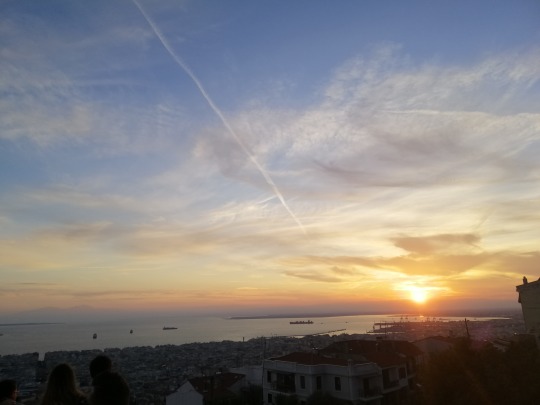
Ik vertel Giorgios over mijn plan om de Olympus te beklimmen en hij zegt meteen dat ik dat nu moet doen, anders is het te laat. Het liefst morgen zegt hij. Dat haal ik niet, maar voor de dag erop boek ik een hostel aan de voet van de berg. Daar zal ik wel mensen tegenkomen die de beklimming maken.
De volgende dag drink ik nog een kopje thee in Thessaloniki en wandel ik wat langs de haven. Ze hebben hier van die kleine tafeltjes om ‘s ochtends je koffie of thee aan te drinken, het ziet er wel grappig uit.
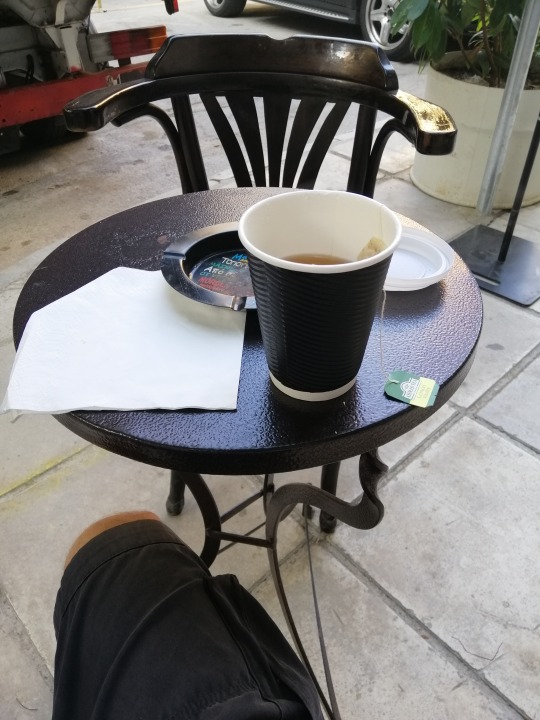
Zo klein dat je er geen ontbijt aan kan eten, alleen een kopje drinken op zetten.
In de haven probeer ik nog wat visjes te spotten, maar ik zie niks. Wel zie ik op een gegeven moment een kwal die ik niet ken. Iemand enig idee wat dit voor kwal is? Het lijkt alsof ie allemaal kokkels aan zijn tentakels heeft hangen onderaan. Geen idee wat het is.
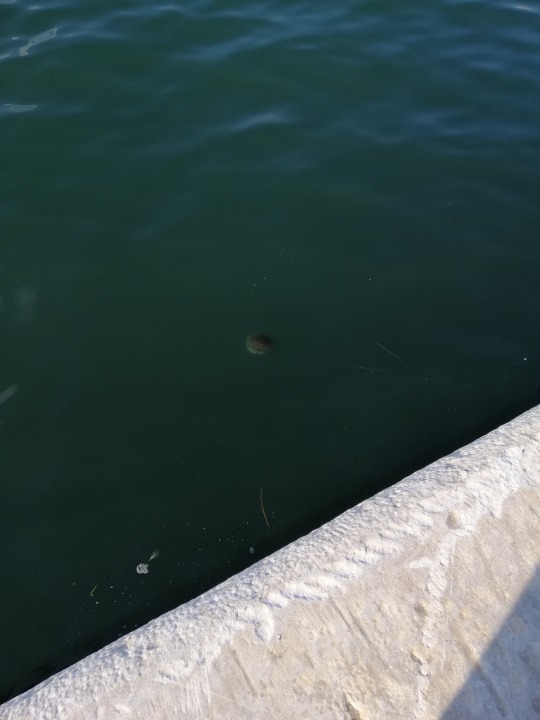
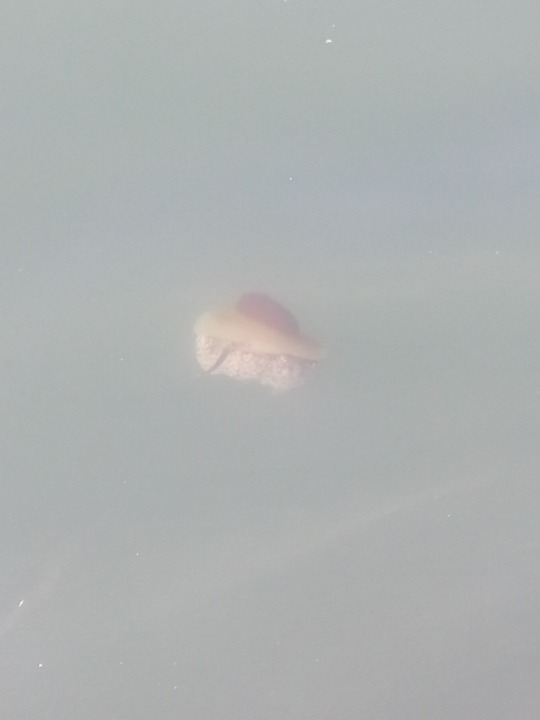
Ik check uit bij mijn hostel en stap op de bus naar Katerini, waar ik weer overstap op een bus naar Litochoro, aan de voet van de Olympus. De bus rijdt echter naar het dorpje Olympus en komt niet langs mijn hostel, dat aan zee ligt. Ik heb dit te laat door en moet nu dus helemaal van het dorpje terug naar de zee lopen, ongeveer 1,5 uur met beide tassen. Ach ja, goeie voorbereiding voor de hike van morgen en overmorgen.
Ik kom aan in het hostel en blijk helemaal alleen te zijn. Ik word begroet door Luisa, 2 grote honden en een zootje katten. Ze checkt me in en vraagt of ik wat wil eten. Jazeker! Ze maakt een pompoensoep voor me en een Griekse salade. Heerlijk, ik heb nog nooit zelfgemaakt eten gekregen bij een hostel.
Ik probeer de laatste zonnestraaltjes op het terras nog op te vangen als ik even later de honden weer hoor blaffen. Bezoek. Het blijkt Samy (22) uit Parijs te zijn. Hij is een student Medicijnen die er eventjes een weekje tussenuit is. We kunnen het meteen goed met elkaar vinden en hij vertelt me dat hij vandaag de berg is opgeklommen, maar te laat begon. Hij kon daardoor niet de mountain refuge op 2100 meter halen en is terug gekomen. De volgende dag is hij van plan naar Thessaloniki te reizen. We hangen een beetje op het strand en praten over van alles en nog wat en ik probeer hem over te halen om het de volgende dag nog een keer te proberen en met mij de berg op te klimmen. Ik zie dat hij er stiekem wel zin in heeft.
Na een tijdje lopen we terug naar het hostel om wat te drinken en er is een derde gast gearriveerd, Josh (23) uit Bremen. Hij was vandaag wel op tijd vertrokken van Prionia (1100m), maar het werd hem op een gegeven moment te zwaar en hij is terug gegaan. Hij was ook in zijn eentje. Hij wil het morgen ook nog een keer proberen en samen overtuigen we Samy om met ons mee te gaan. Het lukt! We spreken af de volgende ochtend vroeg op te staan en vanaf Litochoro helemaal onderaan te beginnen.
Na een korte nacht maken we de zonsopgang mee bij het hostel en pakken we onze spullen en sandwiches van Luisa en vertrekken we naar Litochoro. Hier de zonsopgang met Samy, Luisa en Tula de hond.
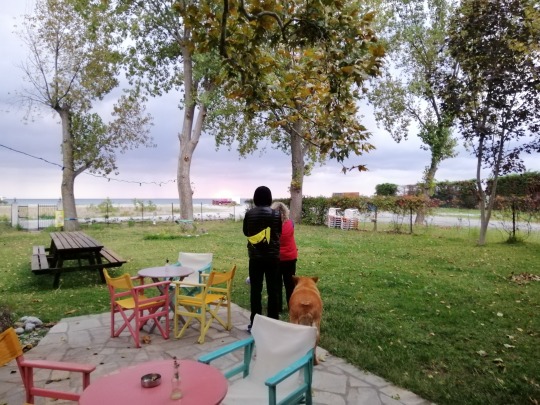
Vanaf Litochoro is het (als je alles goed doet) 5 uur lopen naar Prionia. Vanaf Prionia is het als alles meezit dan nog 3 uur lopen naar refuge A Spilios Agapitos op 2100 meter. 8 uur moet te doen zijn in 1 dag.
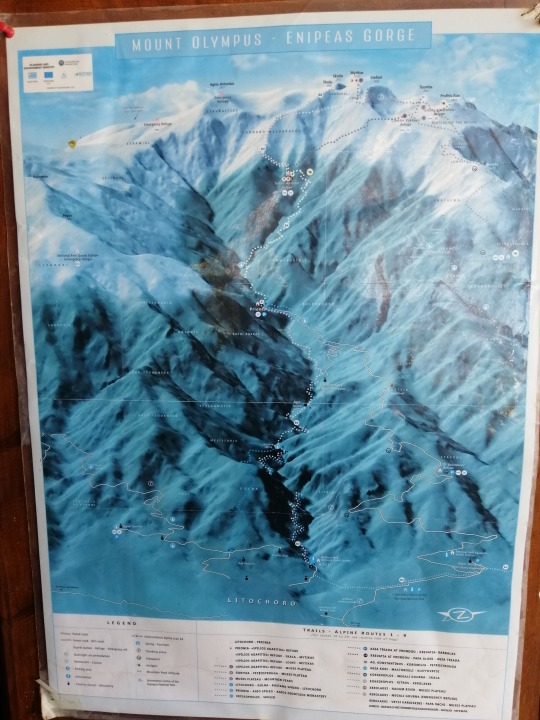
We beginnen met mooi weer en goede moed om 9 uur ‘s ochtends aan onze tocht. We zijn niet de meest voorbereide hikers (hierover later meer), maar we hebben in ieder geval nu nog de goden aan onze zijde.
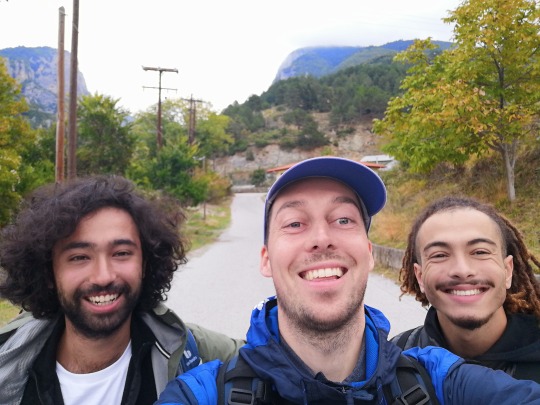
Het eerste stuk van de hike is prachtig, we zien een hoop van de natuur en vullen onze flesjes met vers water uit de bergen.
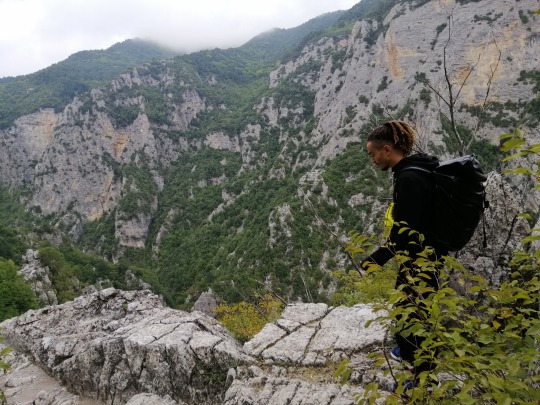
Na een tijdje worden we ingehaald door een blauwe schim. Hij zegt even snel hoi en loopt ons snel voorbij. Als we denken ongeveer halverwege onze klim naar Prionia te zijn, komt hij teruglopen. Hij geeft aan dat dit niet de weg naar Prionia is en dat hij helemaal naar een andere top is gelopen om hierachter te komen. Gelukkig zijn wij hem nog tegengekomen. Het blijkt Mario (30) uit Porto te zijn. Een ingenieur die werkt aan aerodynamica van helikopters en in zijn vrije tijd marathons loopt. Hij ziet er een stuk fitter uit dan ons. Beter voorbereid ook. We besluiten om samen terug te lopen en onze weg naar Prionia te vervolgen.

Onderweg terug naar het punt waar we verkeerd zijn afgeslagen komen we een stel tegen, 2 Russische game developers, Tatiana en Artemi. Zij dreigen ook verkeerd te lopen en nadat we dit uitleggen zijn we nu met een groep van 6. Prima om de Olympus mee te bedwingen. We vervolgen onze weg en komen om 3 uur aan in Prionia. Een uur later dan gepland vanwege onze verkeerde afslag. Hier besluiten we een half uur te rusten, eten en drinken.

Om half 4 vervolgen we onze weg naar refuge A. We moeten voor 8 uur binnen zijn, anders worden onze bedden weggegeven. We hadden ‘s ochtends gebeld om 3 bedden te reserveren en dat kon, maar dan moeten we wel op tijd aankomen. Moet lukken. Voor 7 uur zou ook wel fijn zijn want anders moeten we in het donker hiken.
Op de berg komen we de pony’s (of paarden of half/half?) tegen die het voedsel en drinken naar de mountain refuges brengen. Even overwegen we om met de pony’s omhoog te gaan, maar we besluiten toch verder te lopen. Minder goed verhaal als je de helft op de rug van een pony hebt gedaan.

Het laatste stukje van dag 1 is een stuk zwaarder dan het eerste stuk omdat het recht omhoog de berg op is. Er worden minder grapjes gemaakt en er wordt minder gepraat dan voorheen. Minder pauzes genomen ook. We moeten op tijd bij de refuge aankomen. Wel komen we onderweg berg salamanders tegen. Ik weet niet precies wat voor diertje dit is, maar het ziet er mooi uit.
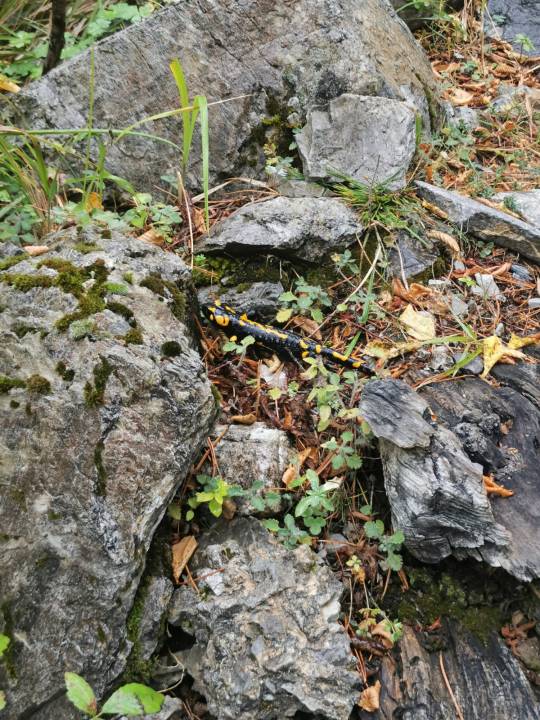
Na 2 uur en 50 minuten lopen (binnen de 3 uur ey ;) ) komen we aan bij refuge A. Iedereen zit er behoorlijk doorheen en het is ook al koud en mistig geworden.

Binnen is het lekker warm! Yes! Er zijn slippers voor iedereen dus kunnen we onze wandelschoenen uitdoen en er zijn weer zelfgemaakte maaltijden! Helemaal top. We bestellen allemaal spaghetti met gehaktballen en het smaakt ons allemaal bijzonder goed. Ook hebben ze mountain tea met honing, lekker om mee op te warmen. Voor de rest is de mountain refuge vrij basic. We slapen allemaal naast elkaar op de slaapzaal en het licht gaat om 10 uur uit. Iedereen moet de volgende dag vroeg op om de klim naar de piek te maken. Als dat überhaupt mogelijk is. De receptie geeft de volgende ochtend aan welke pieken wel en welke pieken niet mogelijk zijn, afhankelijk van het weer.
De toiletten zijn geen normale toiletten maar gewoon gaten in de grond waar je boven moet hurken. Er zit ook geen slot op de deur. Handig. Er is één douche voor iedereen om te delen en die wordt gevuld met smeltwater van de bergtop. Ik besluit toch maar te douchen, liever ijskoud en schoon dan slapen in je eigen zweet. Het is inderdaad ijskoud water, maar achteraf voel ik me een stuk beter en klaar voor de volgende dag.
Het licht gaat uit om 10 uur en iedereen probeert direct te slapen. Wat niet lukt natuurlijk want er snurken altijd mensen en je ligt allemaal bij elkaar. Naja, we doen ons best. Om kwart over zes (!) ‘s ochtends gaan ineens alle lichten weer aan. Blijkbaar staat iedereen om deze tijd op. Wij dan ook maar. We nemen een licht ontbijtje en informeren over de weersomstandigheden. De hoogste top, Mytikas (2917m) wordt ten strengste afgeraden. Skolio (2911m) eigenlijk ook. Wij gaan dan maar voor Skala (2866m).
Na een niet ideale nachtrust en tegenvallend weer (regen, wind, kou en mist) beginnen we langzaam. Het is de kortste hike van de Olympus (2 uur), maar ook de zwaarste. Niemand praat. Het uitzicht is in het begin mooi, maar na een tijdje wordt de mist dichter en wordt het kouder en natter en heeft niemand meer zin om te stoppen. We moeten ook in beweging blijven om warm te blijven.
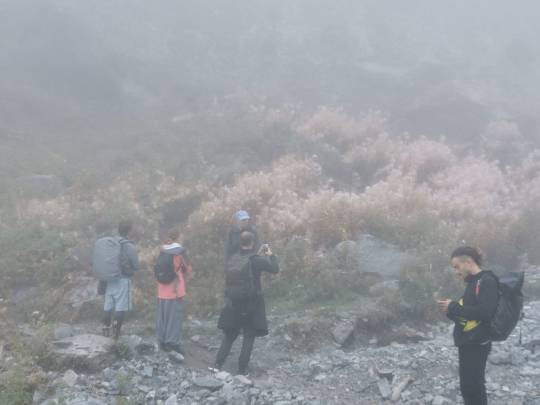

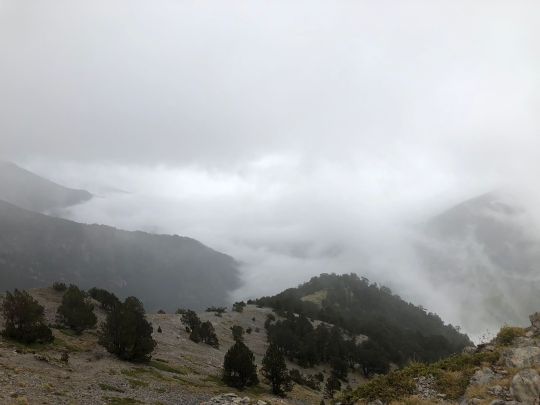


De mist wordt dichter en na een tijdje passeren we ook de boomgrens. Vanaf nu is het alleen nog maar rots en wordt het nog iets zwaarder. Ongeveer halverwege de tocht kan Josh het niet meer aan en besluit hij op te geven. hij wil terug naar beneden, maar vindt het te gevaarlijk om in zijn eentje te gaan. Niemand van ons wil mee omdat we allemaal de top willen halen. We zitten met een dilemma. Ik stel voor dat hij op zijn eigen tempo probeert met ons mee te lopen. Er zijn mensen voor ons vertrokken naar de top en als die dan terug komen kan hij met hen mee. Hij gaat akkoord.

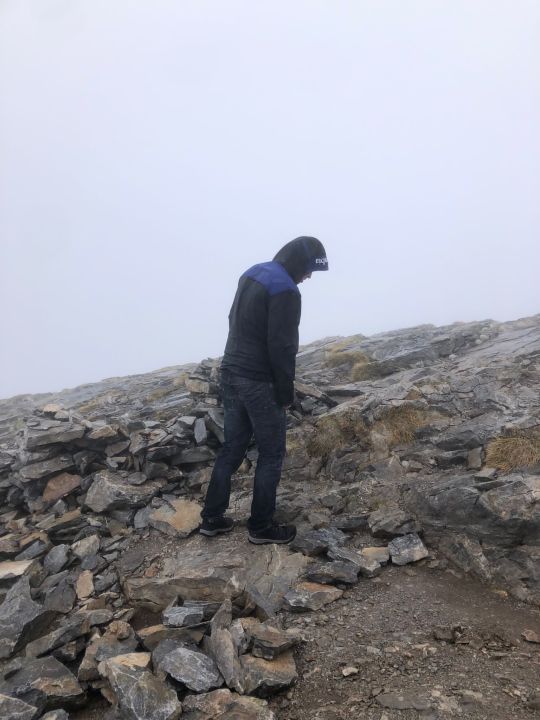
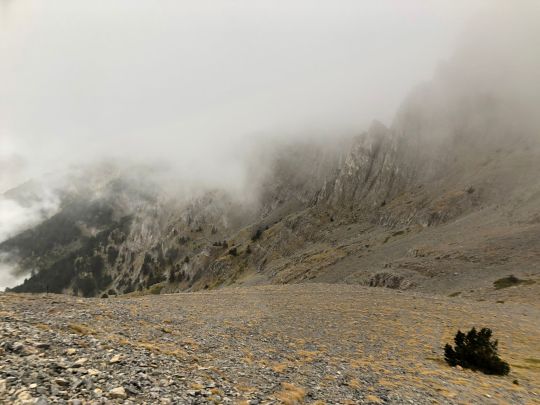
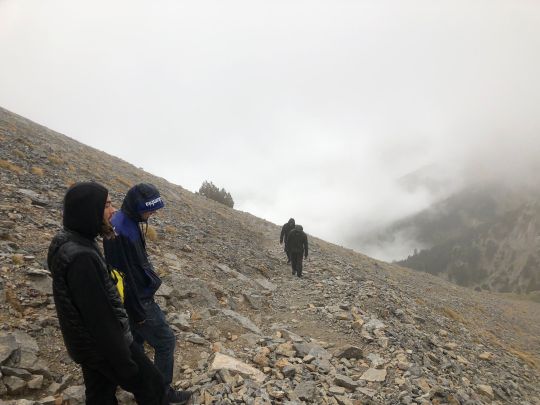
Langzaam vervolgen we ons pad naar de top en er komen inderdaad twee Duitse meisjes terug naar beneden lopen. Josh is dolblij en gaat met ze mee terug.
Wij komen aan bij de top waar de wind het sterkst is en zien bijna geen hand voor ogen. Het sneeuwt hier ook nog eens. We vieren kort met elkaar dat we het hebben gehaald en maken direct rechtsomkeert.
Onderweg terug naar de refuge komen we Josh tegen. Hij gaat het toch nog een keer proberen en passeert ons naar de top. Ongeveer een half uur later komt hij achter ons aan lopen. Het is hem toch niet gelukt. Geen schande, de omstandigheden zijn nou niet bepaald ideaal. Ik zie zelfs Mario trillen als een rietje. Het is ook geen weer voor een Portugees hierboven.
We komen samen aan bij de refuge en zijn superblij om hier weer te zijn. We hebben het gedaan!

Nu even snel opwarmen en verder afdalen naar Prionia. Het weer wordt alleen maar slechter dus we kunnen niet te lang wachten. Mario verblijft nog 1 nacht in de refuge om morgen hopelijk een ander plateau te kunnen beklimmen. Die gast is niet kapot te krijgen. Wij dalen door de regen af naar Prionia en regelen vanaf daar een ritje terug naar het hostel. Na in totaal 16 uur hiken hebben we het wel gehad. In het Summit Zero hostel is de stemming goed en hebben ze een warme douche! Geweldig. Onze natte kleren trekken we uit en stoppen we weg. Een biertje hebben we nu wel verdiend. Vanavond lekker slapen en dag erop naar Athene.
Tips achteraf voor het beklimmen van de Olympus:
- Ga niet in oktober, maar ergens tussen juni en september voor de beste omstandigheden
- Breng goeie regenkleding mee
- Oefen alvast met wat kleinere hikes, voordat je begint
0 notes
Text
Events 10.26
1185 – The Uprising of Asen and Peter begins on the feast day of St. Demetrius of Thessaloniki and ends with the creation of the Second Bulgarian Empire.
1341 – The Byzantine civil war of 1341–47 formally begins with the proclamation of John VI Kantakouzenos as Byzantine Emperor.
1377 – Tvrtko I is crowned the first king of Bosnia.
1520 – Charles V is crowned as Holy Roman Emperor.
1597 – Imjin War: Korean Admiral Yi Sun-sin routs the Japanese Navy of 300 ships with only 13 ships at the Battle of Myeongnyang.
1640 – The Treaty of Ripon is signed, restoring peace between Covenanter Scotland and King Charles.
1689 – General Piccolomini of Austria burns down Skopje to prevent the spread of cholera; he died of the disease himself soon after.
1774 – The first Continental Congress adjourns in Philadelphia.
1813 – War of 1812: A combined force of British regulars, Canadian militia, and Mohawks defeat the Americans in the Battle of the Chateauguay.
1825 – The Erie Canal opens, allowing direct passage from the Hudson River to Lake Erie.
1859 – The Royal Charter Storm kills at least eight hundred people in the British Isles.
1860 – The Expedition of the Thousand ends when Giuseppe Garibaldi presents his conquests to King Victor Emmanuel of Sardinia.
1863 – The Football Association is founded.
1892 – Ida B. Wells publishes Southern Horrors: Lynch Law in All Its Phases.
1905 – King Oscar II recognizes the dissolution of the union between Norway and Sweden.
1909 – An Jung-geun assassinates Japan's Resident-General of Korea.
1912 – First Balkan War: The Ottomans lose the cities of Thessaloniki and Skopje.
1917 – First World War: Brazil declares war on the Central Powers.
1918 – Erich Ludendorff, quartermaster-general of the Imperial German Army, is dismissed by Kaiser Wilhelm II for refusing to cooperate in peace negotiations.
1936 – The first electric generator at Hoover Dam goes into full operation.
1942 – World War II: In the Battle of the Santa Cruz Islands during the Guadalcanal Campaign, one U.S. aircraft carrier is sunk and another carrier is heavily damaged, while two Japanese carriers and one cruiser are heavily damaged.
1944 – World War II: The Battle of Leyte Gulf ends with an overwhelming American victory.
1947 – Kashmir conflict: The Maharaja of Kashmir and Jammu signs the Instrument of Accession with India.
1955 – After the last Allied troops have left the country, and following the provisions of the Austrian Independence Treaty, Austria declares that it will never join a military alliance.
1955 – Ngô Đình Diệm declares himself Premier of South Vietnam.
1956 – Hungarian Revolution: In the towns of Mosonmagyaróvár and Esztergom, Hungarian secret police forces massacre civilians. As rebel strongholds in Budapest hold, fighting spreads throughout the country.
1958 – Pan American Airways makes the first commercial flight of the Boeing 707 from New York City to Paris.
1967 – Mohammad Reza Pahlavi crowns himself Emperor of Iran.
1968 – The Soyuz 3 mission achieves the first Soviet space rendezvous.
1977 – Ali Maow Maalin, the last natural case of smallpox, develops a rash in Somalia. The World Health Organization and the Centers for Disease Control and Prevention consider this date to be the anniversary of the eradication of smallpox, the most spectacular success of vaccination.
1979 – Park Chung-hee, President of South Korea, is assassinated by Korean CIA head Kim Jae-gyu.
1985 – The Australian government returns ownership of Uluru to the local Pitjantjatjara Aboriginals.
1989 – China Airlines Flight 204 crashes after takeoff from Hualien Airport in Taiwan, killing all 54 people on board.
1991 – Three months after the end of the Ten-Day War, the last soldier of the Yugoslav People's Army leaves the territory of the Republic of Slovenia.
1994 – Jordan and Israel sign a peace treaty.
1995 – Mossad agents assassinate Islamic Jihad leader Fathi Shaqaqi in his hotel in Malta.
1995 – An avalanche hits the Icelandic village Flateyri, destroying 29 homes and burying 45 people, 20 of whom died.
1999 – Britain's House of Lords votes to end the right of most hereditary peers to vote in Britain's upper chamber of Parliament.
2000 – A wave of protests forces Robert Guéï to step down as president after the Ivorian presidential election.
2001 – The United States passes the USA PATRIOT Act into law.
2002 – Approximately 50 Chechen terrorists and 150 hostages die when Russian special forces troops storm a theater building in Moscow, which had been occupied by the terrorists during a musical performance three days before.
2003 – The Cedar Fire, the third-largest fire in California history, kills 15 people, consumes 250,000 acres (1,000 km2), and destroys 2,200 homes around San Diego.
2015 – A 7.5 magnitude earthquake strikes in the Hindu Kush mountain range in northeastern Afghanistan, killing 398 people and leaving 2,536 people injured.
2016 – An earthquake of magnitude 6.6 strikes central Italy.
0 notes
Photo

Like the sleepwalker in the void
66 notes
·
View notes
Photo
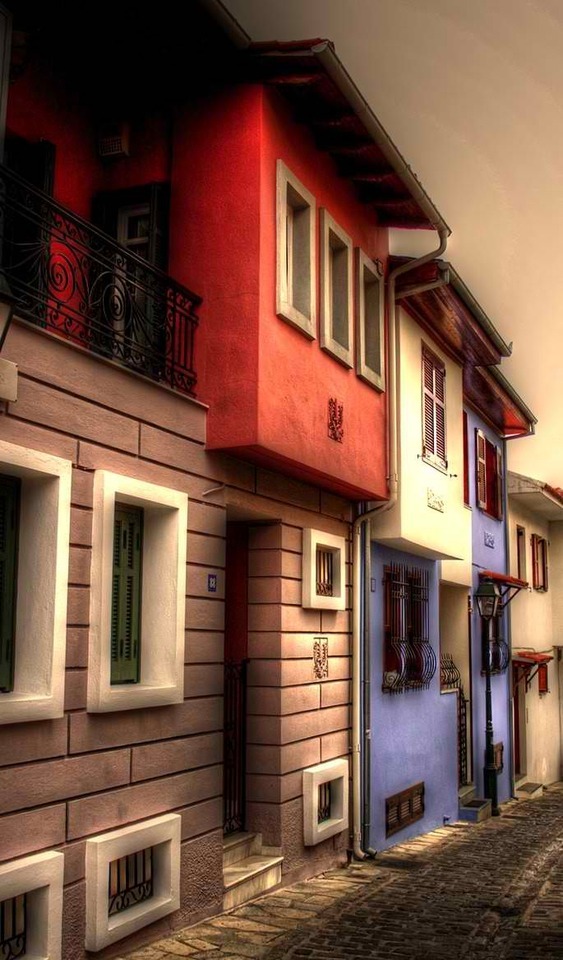
Upper Town of Thessaloniki
71 notes
·
View notes
Text


Upper Town, Thessaloniki
#thessaloniki#greece#makedonia#orthodox church#orthodox#greek history#greek#greek architecture#greek life#greek aesthetic#upper town#anapolis#anapoli
4 notes
·
View notes
Text
The Coronavirus Diary of a little city hermit

Dear brothers and sisters,
Christ is in our midst.
This “Remember the little things” diary of a Pustynnik started making me really observe and feel grateful for all these “little” things. Here are my three for today: a stunning view of Mount Olympus from upper town Thessaloniki, a crow bathing in rain puddle and a lost baby cavalier I helped walk back home. Glory to God for all things! Please…
View On WordPress
0 notes
Photo
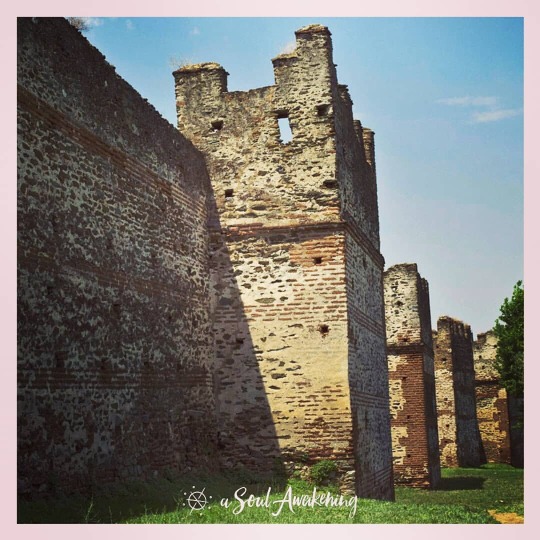
I learnt that a visit to Thessaloniki wouldn’t be complete without experiencing the historic old town, Ano Poli GR - Άνω Πόλη (Upper Town). Located around the city’s acropolis high on the mountainside overlooking the city centre and beautiful views across the Thermaic Gulf, in the northwest of the Aegean Sea. 💕 I felt like I had stepped back in time as I roamed the many narrow cobbled stone lanes that provide access to a number of historic locations. 💕 Taking in the sights of the panoramic views from the Tower of Trigonio (Triangle Tower), then walking through one of two large ‘Portaras’ gates that lead you inside the Acropolis to admire the many quaint Greek and Ottoman dwellings and many notable landmarks. Like the church of Profitis Elias; the late 12th/early 13th century Byzantine bath; the Heptapygrion that served as a prison during the late 1800s until 1988, now a museum and many others. 💕 And stopping by for lunch to enjoy delicious local homemade Greek food at the tavern Kastro tou Plastara. 💕 Like, save for later and comment below. 💕🙂 (at Ano Poli) https://www.instagram.com/p/B9lTYfxlGnS/?igshid=78u70djy2qv9
0 notes
Photo

(via The Byzantine LegacyさんはTwitterを使っています: 「Thessaloniki from the Walls of the Upper Town https://t.co/Dopxwk7yxD」 / Twitter)
0 notes
Photo
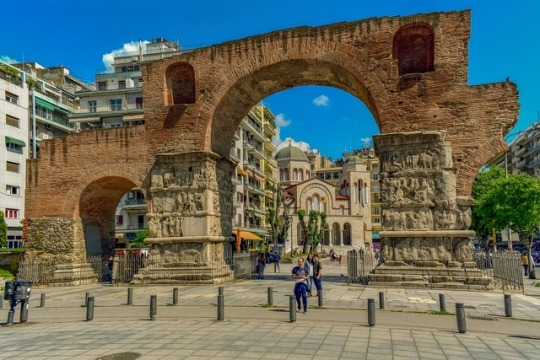
Don't overlook Thessaloniki when planning your vacation in Greece. There's plenty of things to do in Thessaloniki, and you'll enjoy its laid back vibe.
Thessaloniki Sightseeing Guide
Like many people, you may have never considered Thessaloniki as a possible destination to visit in Greece. Yet, this lively coastal city has lots to offer. This is our Thessaloniki sightseeing guide, including the top things to do in Thessaloniki, main attractions, and some hidden gems.
Where is Thessaloniki?
Thessaloniki is in North Greece, in the administrative region of Central Macedonia. You can get to Thessaloniki through an international flight or through a local flight / train / bus from Athens.
Thessaloniki is often the starting point for people who want to go to Chalkidiki, an area famous for its beaches. Stay a day or two if you can though. It’s also a fantastic city break destination in Greece.
What is so special about Thessaloniki?
Greece’s second biggest city, Thessaloniki is often ignored by people visiting Greece. Which is too bad, as Thessaloniki is one of the most interesting and charming cities in Greece.
With tons of sightseeing, amazing food, a vibrant night life, a lively seaside promenade, a relaxed vibe and thousands of students, Thessaloniki can quickly become one of your favourite cities in Greece.
History of Thessaloniki
Although it’s a fairly compact city, Thessaloniki has many interesting sights, from several different eras. In order to appreciate better what to see in Thessaloniki, it makes sense to know a little about the city’s past.
Like most of Greece, Thessaloniki has a very long and rich history. The city was founded in 316/315BC, a few years after the death of Alexander the Great.
Its founder was Kassandros, one of Alexander’s generals, who was later pronounced King of Macedon. The city was named after Kassandros’ wife Thessaloniki, who was also Alexander’s half-sister.
The first walls were built around the city in the 2nd century BC, in order to protect it from foreign invasions. Regardless, the city passed on to the Romans in 168 BC, after the Kingdom of Macedon was destroyed.
Due to Thessaloniki’s strategic placement on the map, it soon became an important commercial centre, trade hub and port. The city’s acropolis was built in 55 BC.
Churches in Thessaloniki
Christianity first arrived in Thessaloniki through Apostle Paul, in around 50 AD. Although Paul was better received in Thessaloniki than in Athens, it took about four centuries for the first Christian church, Agios Dimitrios, to be built.
Today a large basilica with impressive catacombs, the church is named after the patron saint of the city. At that time, Thessaloniki was a very important city, second only to Istanbul.
Many of the existing sites, such as the Rotunda, Galerius’ Arch and the Roman Agora, belong to that era.
Byzantine Empire Era
After the fall of the Roman Empire and during the Byzantine era, Thessaloniki was attacked by barbarians, the Slavs, the Saracens and the Bulgarians.
Apart from the ongoing attacks, a massive earthquake in 620 AD destroyed several buildings, and parts of the city had to be rebuilt.
The era between the 10th and 12th centuries was generally peaceful, with a few attacks by the Bulgarians and the Normans.
Crusaders in Thessaloniki
In the beginning of the 13th century, Istanbul was conquered by the Francs of the Fourth Crusade. As a result, Thessaloniki came for the first time into the hands of the Latin Empire, though new conquerors and rulers passed by the city in the decades that followed.
Nevertheless, commerce and Byzantine art flourished during that time, and this can be observed in some of the city’s most important churches, like Agia Sofia.
Ottoman Thessaloniki
After a brief period of conquest by the Venetians, Thessaloniki became an Ottoman city in 1430. As a result, the already significant Muslim and Jewish populations of the city started growing. This meant the Greek population of the city became a minority, and many of the Orthodox churches were transformed into mosques.
The city’s landmark, the White Tower of Thessaloniki, was built in this period 1535 to be used as a prison.
For the duration of the next centuries, Thessaloniki was home to several distinct populations, mostly clustered in different areas of the city – as an example, many Ottomans lived in the Ano Poli (Upper Town).
Great Fire of Thessaloniki
The Great Fire of Thessaloniki, in 1917, destroyed a large part of the centre of the city, though some of the mosques and hammams, built in stone, were left fairly intact. Many buildings in the Ano Poli survived, and as a result Ottoman architecture in Thessaloniki is quite prominent.
After the Great Fire, about a fourth of the population of the city, mostly Jewish people, were left homeless. Many of them emigrated to other countries later, to be soon replaced by refugees who came from Turkey after the population exchange in 1921. The parts of the city that had been destroyed were later reconstructed according to a modern plan.
History Lesson Over!
Too much information? Sure – we told you the city has a long and rich history! And this is without any information about the involvement of Thessaloniki in the Balkan and World Wars, which is another long chapter in the city’s history.
What to see in Thessaloniki
Now that you have got a quick idea of Thessaloniki’s history through the centuries, you can understand that, just like Rome, Thessaloniki is really an open museum, with Roman and Byzantine buildings everywhere. With this in mind, here are the top things to do and see in Thessaloniki.
Visit the Roman monuments in Thessaloniki
The Roman Forum in Thessaloniki, known also as Ancient Agora or Roman Agora, was constructed by the Romans in the 1st century AD. Just like the Ancient Agora in Athens, it was the place where all commercial, financial, social and religious activities were taking place. The Agora was active until the 4th century, when the centre of the city moved further east.
Within the grounds of the Agora you can see an ancient amphitheatre which has been restores, as well as remains of certain buildings and underground corridors. The Roman Forum also has a museum, partly hidden underground – don’t miss it!
Galerius Palace Complex
Alongside Navarinou Square, you can see the remains of the Galerius Palace Complex. The luxurious, massive complex was built by Emperor Galerius, who realised the potential of the city early on and wanted to construct a palace to match.
It included several buildings, many of which can still be seen today, and spread over a total area of 15 hectares / 37 acres. Apart from the Roman monuments, Navarinou Square is a hangout for students, and is lined with many interesting shops.
The Arch of Galerius, known as “Kamara” is a popular meeting point for locals. It was built in the beginning of the 4th century AD, and much of its decoration highlights Emperor Galerius’ winning battles against the Persians.
Visit the UNESCO monuments in Thessaloniki
In 1988, fifteen Paleochristian and Byzantine monuments in Thessaloniki were categorized as the Paleochristian and Byzantine Monuments of Thessaloniki UNESCO World Heritage Site. This is one of 18 UNESCO Heritage sites in Greece.
The most significant UNESCO buildings in Thessaloniki are:
The Byzantine Walls of Thessaloniki
The Byzantine Walls of Thessaloniki were first constructed in the 2nd century BC, and were later rebuilt and reconstructed several times, by the Romans, the Byzantines and the Ottomans.
They were around 8 km in total, and about half of them have survived. Inside the Walls you can see the Heptapyrgion Castle, which was used as a prison until 1989.
Today it is open to visitors as a museum, and often hosts interesting exhibitions. This is one of the best places for Thessaloniki views.
The Basilica of Agios Dimitrios
The basilica of Agios Dimitrios stands in the place of an early Christian temple, which was destroyed during the earthquake in 620 AD and was later rebuilt.
The basilica suffered major damage in the Great Fire in 1917, and was subsequently restored. Fortunately, many of the 5th century mosaics have survived. The basilica hosts a Byzantine exhibition in its extensive catacombs.
The Rotunda of Thessaloniki
The Rotunda, which was recently opened to the public, was built by the Romans and was later expanded and served as a Christian church.
Even though part of the Rotunda was destroyed by the earthquake in 620 AD, many of its original mosaics remain intact. Don’t forget to check out the acoustics!
Other UNESCO monuments in Thessaloniki
Dotted around Thessaloniki, you can see, or perhaps literally stumble upon, many more UNESCO Byzantine monuments. During the Ottoman era, all of the Byzantine churches in Thessaloniki were transformed into mosques, and much of the artwork was covered in plaster. Fortunately, due to restoration projects, a lot of it has been uncovered.
If you have several days in Thessaloniki, it’s worth visiting all of the Byzantine churches in Thessaloniki. Even if you are not too interested in Byzantine architecture, you will be impressed with some of the mosaics or the frescoes.
For many of them, opening hours are irregular and vary a lot depending on season and availability of personnel. Overall, your best bet is to visit in the morning.
Byzantine Churches in Thessaloniki
The church of Agia Sofia, with amazing frescoes, was built in the 8th century and replaced a Paleochristian church in the same spot. Its design is similar to the famous Hagia Sofia in Istanbul. The exquisite mosaics date from four different eras.
The temple of Osios David / Latomou Monastery in Ano Poli has an impressive 6th century mosaic and unique 12th century frescoes
The basilica of Panagia Ahiropiitos, built in the 5th century, has survived pretty much intact since it was built, and some of the original mosaics can still be seen
The temple of Panagia Halkeon, close to the Roman Agora, was built in 1028 AD.
The temple of Agios Panteleimonas, a small temple close to the Rotunda, has few frescoes left
The temple of Agii Apostoli on Olympou street has an amazing mosaic
The temple of Agios Nikolaos Orfanos is located in Ano Poli, and is home to some of the most impressive art in the Byzantine world
The temple of Agia Ekaterini, dating from the 13th-14th century, is close to Olympiados street. Most frescoes have not survived, but the architecture of the temple is worth paying a visit.
The temple of Sotiras is a small temple built in the 14th century
Vlatadon monastery is right outside the Acropolis walls. It was founded in the 14th century, and it’s the only Byzantine monastery of Thessaloniki that is still in use.
The small temple of Prophet Ilias on Olympiados street has unique architecture
Finally, the Byzantine baths on Theotokopoulou street are an excellent example of a fully functioning bathhouse of the Byzantine era.
Visit the White Tower of Thessaloniki
Once the city’s grim prison, the White Tower has been transformed into a museum hosting a superb exhibition on Thessaloniki’s rich history.
Apart from the multimedia material, you will be impressed by the Tower’s architecture. Note that, if you don’t speak Greek, you will need to get an audio guide, as due to lack of space the printed signs are only in Greek.
Visit the Ano Poli in Thessaloniki
By now, you are getting an idea of the wealth of Roman and Byzantine monuments in Thessaloniki. Given that many of them are in Ano Poli, you can easily spend a whole day in that area alone.
The Ano Poli itself is a unique neighbourhood that survived the Great Fire in 1917. The area is very picturesque, and reminds Greece of the 1960s. Allow enough time to stroll around the streets and soak the ambience.
If you don’t mind walking, the best way to explore the city is on foot. You can walk up all the way to Ano Poli, see the Walls and Castle, sit for a coffee or meal, and then head down to the centre, following a route that takes you past some of the Byzantine churches. If you prefer, you can also take a public bus or taxi to Ano Poli, and just walk down.
The easiest way to see Thessaloniki including the Ano Poli and Castle, is the hop-on hop-off bus, stopping at the city’s major sites.
Visit the Museums in Thessaloniki
A city where culture is everywhere, Thessaloniki boasts a large number of museums. Whether you are interested in history, ethnography or art, there will be at least one museum you will love.
The Archaeological Museum in Thessaloniki
This is one of the largest museums in Greece. It explains life in the wider area of Thessaloniki and Macedonia from prehistoric to Byzantine times. It is also home to some of the most important artefacts from the ancient Kingdom of Macedon.
More here: The Archaeological Museum in Thessaloniki
The Museum of Byzantine Culture in Thessaloniki
This museum showcases various Byzantine artefacts found in the area surrounding Thessaloniki. There are 11 rooms, each one focusing on a specific time period, as well as temporary exhibitions. You can see mosaics, manuscripts, frescoes, icons, coins, and several other objects that will give you an idea about life during the Byzantine Era.
More here: The Museum of Byzantine Culture in Thessaloniki
Travel Tip: A special ticket valid for 3 days is available, offering access to the two above museums and other sites.
The State Museum of Contemporary Art
Home to several works of modern and contemporary European art, as well as a large collection of Russian Avant-Garde Art. The museum is split in two separate buildings – the Moni Lazariston complex, hosting the Russian collection, and the B1 Warehouse at the Port of Thessaloniki. There are permanent and temporary exhibitions, so check the website before you visit.
More here: The State Museum of Contemporary Art
The Museum of Photography
Hosting rotating exhibitions, this excellent museum is located at the Port area. There is always something interesting going on, and you can also spend some time at the café, with lovely views towards the sea.
More here: The Museum of Photography
The Cinema Museum
Right next door to the Museum of Photography is the Cinema Museum, showcasing the history of Greek cinema from the early 20th century. Even if you don’t speak much Greek, you will be able to appreciate many of the exhibits.
More here: The Cinema Museum
The Macedonian Museum of Contemporary Art
Hosts an extensive selection of Greek and international works of art, mostly acquired through private donations. Those familiar with Greek artists will be delighted to see artworks by people like Akrithakis, Zongolopoulos, Tsoklis, Moralis, Mitaras etc. The official website is largely in Greek, but this page will help.
The Museum of the Macedonian Struggle
Addresses the 19th-20th century history in Thessaloniki, and follows life in the city until the present day. It’s a great place if you want to explore Thessaloniki’s recent history.
More here: The Museum of the Macedonian Struggle
The Jewish Museum in Thessaloniki
Founded in 2001, it aims to collect and showcase existing documents and artefacts, in order to present to the public the long presence of Jewish people in Thessaloniki. The museum has important collections of pre-war photos and documents.
More here: The Jewish Museum in Thessaloniki
Folklife and Ethnological Museum of Macedonia-Thrace
Finally, the Folklife and Ethnological Museum of Macedonia-Thrace, showcases aspects of the traditional culture of northern Greece.
More here: Folklife and Ethnological Museum of Macedonia-Thrace
Stroll along the Old Promenade – Palia Paralia
One of the most popular walks in Thessaloniki for decades, this stroll follows Nikis Avenue, beginning at the port and ending at the White Tower. While at the port area, you can visit some of the city’s numerous museums, but also sit and look at the sea, like many locals.
The Old Promenade passes in front of Aristotelous Square, one of the locals’ favourite areas. There are also numerous cafés and a few tavernas on the way, so you can stop at any point and admire the views.
Stroll along the New Promenade – Nea Paralia
The New Promenade is one of the newest additions to the city’s landscape. Starting from the White Tower of Thessaloniki and extending to the west, it is one of the prettiest and liveliest parts of Thessaloniki.
Along the wide pedestrianized area you will see couples, cyclists, street vendors, parks, and the famous statue Umbrellas by Giorgos Zongolopoulos, an important Greek artist. Stop for a snack, or hop in a small boat-bar and enjoy a beer on board.
Food in Thessaloniki – What to eat in Thessaloniki
Thessaloniki has a really, really relaxed vibe. As such, it shouldn’t come as a surprise that eating out is a big thing. There are hundreds of tavernas and mezedopolia where you can have lots of tasty dishes and strong drinks like ouzo and tsipouro to go with them.
Where to eat in Thessaloniki
The areas where you can’t go wrong with food are Ladadika, Bit Pazar and Athonos square, and also the old markets Kapani and Modiano. If you visit the markets during daytime, you can also find all sorts of produce – more on this below.
You shouldn’t leave Thessaloniki without having tried a crispy koulouri from a street vendor, a rich bougatsa pie with a sweet or savoury filling of your choice, and a trigono Panoramatos, a sweet delicacy filled with a type of custard cream.
Thessaloniki’s markets
Rather than just a place to have lunch or dinner, Thessaloniki’s markets are unique. They are the places where you can get the true feel of the city. Here is where locals buy everything, from fruit, veg and olives to meat, fish, nuts and spices, but also clothes, household items, flowers, knick-knacks and many other things.
The most famous markets are Kapani, Modiano, Vlali and Bezesteni, whereas if you are into antiques you should visit Bit Pazar on a Saturday. These markets were built many years ago, and while some of them have seen better days, they are still very interesting to visit, and even more so if you are looking to buy a few things.
Nightlife in Thessaloniki
A city with a totally walkable centre and full of students, Thessaloniki never sleeps. You will find all-day cafés / bars here, there, and everywhere, and many of the places offering food will be open till early in the morning or even 24 hours.
Some of the best places to go for a late coffee or drinks are on Syggrou and Valaoritou Street and in the area of Ladadika. Check out also Iktinou and Zefxidos pedestrian streets, as well as Proxenou Koromila.
Thessaloniki International Film Festival
If you happen to be in Thessaloniki during October-November, don’t miss the Thessaloniki International Film Festival.
During the Festival, you will have the chance to watch the best independent movies from all over the world, and participate in numerous events.
The Festival is popular, and if you are going around that time of year you should book your accommodation in advance. In 2019, the Festival will take place on 31 October – 10 November.
Day trips from Thessaloniki
If you want to get away from the city, there are plenty of choices for day trips from Thessaloniki. You can go further out on an organized tour, such as a trip to Meteora or a visit to Pella, the birthplace of Alexander the Great, and Vergina, the place where the tombs of the Macedon Kings have been discovered.
If you are looking for something more relaxed, you can either go on a boat trip to Mt Athos, an area full of monasteries where women are not allowed, or perhaps take a leisurely cruise to Chalkidiki.
Thessaloniki Sightseeing Guide
Whether you are in Thessaloniki for a day or for a week, this Thessaloniki sightseeing guide will help you. If you have any more ideas, please share them in the comments below.
The post What to do in Thessaloniki – Sightseeing Guide appeared first on Dave& Travel Pages.
#url=https%3A%2F%2Fwww.davestravelpages.com%2Fwhat-to-do-in-thessaloniki-sightseeing-guide%2F&title=What%20to%20do%20in%20Thessaloniki%20%E2%#039;s
1 note
·
View note
Text
Hello everyone!
Whether you’re on a tour around Greece or just chilling by the sea, Thessaloniki should definitely make it to your to-see list, because it’s not only about the famous tower and lovely promenade, the city offers much much more. I spent a week there recently with the Erasmus+ programme (student exchange) and during that week I really managed to see most of the city, and what we didn’t make during the day, I saw while walking the dog. So hence here it is, my guide to Thessaloniki!
The White Tower is the monument-symbol of Thessaloniki. Dating back to 1535, this 30 metres high tower is the sole survivor of 24 towers which were all part of the city’s fortifications once. Today it houses a museum exhibition about history of Thessaloniki.

Moving on further, the Archaeological Museum of Thessaloniki houses archaeological treasures from the dawn of prehistory up to late antiquity. You can also find there collections of ceramics, wall paintings and mosaics, as well as stone objects, metalwork and handicrafts.
Opposite this museum is situated OTE (Hellenic Telecommunications Organisation) and the Macedonian Museum of Contemporary Art with a large collection of painings, engravings, sculptures and photography.
Another interesting thing on the way further to the city centre is the Ippodromiou Square with archaeological findings from the Roman Hippodrome. Next to it is the liveliest square in the city, Navarinou Square, with the Palace of the Emperor Galerius, built in the early 4th century. Worth of mentioning is also the Church of Agia Sofia, one of the oldest and most important monuments of the Christian Orthodox faith, built in the early 7th century on the site of an older temple.
Aristotelous Square, with its view over the gulf, is the heart of Thessaloniki and the most important square in the city. It’s also the commercial centre, with the traditional Ladadika Quarter and very busy Modiano Market. On the north of the square you will find the 11th century Church of Panagia Chalkeon and the 15th century Bey Hamam baths. There you’ll also find the Hamza Bey mosque (also known as Alkazar) and directly opposite the Bezesteni Covered Market, which, according to travellers in the 16th century, was the most beautiful market in the Balkans.
Continuing further away from the sea, you’ll come up to the Diikitirio Square, where among Roman, Byzantine and Ottoman findings you’ll also find Government House – an architectonically interesting building built back in 1891, which formerly housed Ottoman services and nowadays houses the Ministry of Macedonia.

The Church of Agios Dimitrios, patron saint and protector of Thessaloniki, is one of the grandest Christian churches still standing. It is located rigth above the aforementioned spots, it’ll definitely catch your eye. This five-aisled basilica, which has 7th century frescoes and mosaics dating from 5th to 9th century, has been declared a UNESCO World Heritage Monument. To the right, heading towards the seam you will find ancient Agora. This was the social, religious and commercial centre of the city during Roman times. Heading from Agios Dimitrios via Agios Nikolaos and Kassandrou streets, you will see the Yeni Hamam and Alatza Imaret, distinctive examples of Ottoman architecture.
There are few things on the way to the Upper Town I want to mention. First of all, the era changes dramatically. Besides the monuments, you will see many parts of the traditional city grid, with narrow cobblestone streets and buildings with unique elegance and traditional Macedonian adornment. This area is also home to 13th century Byzantine Baths, as well as Church of Blessed David, the catholicon of Latomou Monastery and the oldest architectural example of its kind preserved in Europe.
The Church of the Taxiarches was first constructed in the 14th century but was converted into a mosque during Ottoman rule. The church is in Old Town, which was built on higher ground than the modern city and is still partly enclosed by the old citadel walls. With numerous Byzantine churches and monasteries, the Old Town exudes the atmosphere of an earlier era.
From Eptapyrgiou Street you can see the Byzantine fortification walls constructed by Theodosios the Great in 4th century, and one of the most important sights in the city. The walls end with Trigonio Tower, where you can enjoy an amazing view. Passing through the 2nd Portara (huge gate), you will come across Moni Vladaton, a monastery dating back to the 14th century and sole survivor among dozens of Byzantine monasteries that formerly existed in Thessaloniki. The forecourt offers a magnificent view of the city and over the gulf.

According to the lenged, Pasha Gardens right underneath are the site where St. Paul the Apostle taught when he visited Thessaloniki, and therefore the church lying in this area carries his name. The route here is downhill and runs parallel to the impressive Eastern Walls of the Old Town. These 4th century walls formerly extended all the way to the seafront.

On the way back to the seafront (still straight downhill), you will eventually get to the huge University Campus and its oldest building, the old School of Philosophy. The Aristotle University of Thessaloniki was founded in interwar period, and is the leading intellectual insitution in the city. On the right you will see the Church of Rotonda, a cyllindrical building dating back to the early 4th century AD, during the time of the Roman emperor Galerius. South of Rotona you can see the triumphal Arch of Galerius dating back from the same period.
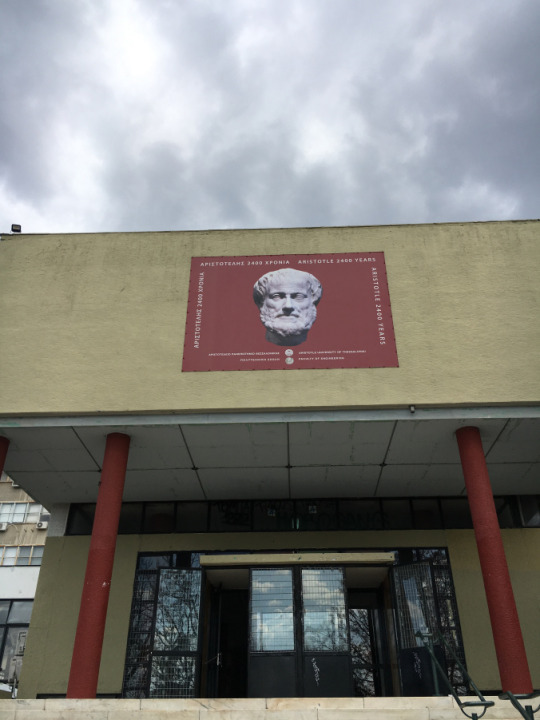
When you get back to the White Tower, I recommend you to take a little walk along the coastline to see the Statue of Alexander the Great and Zongolopoulos Umbrellas, both located nearby. If you decided to take a walk to the left, you’ll find yourself on a long promenade and eventually you’ll get to the city’s second biggest municipality Kalamaria, and if you walk to the right, you will get to the main port and Cinema Museum.
Don’t forget to keep your eyes open to see all the magnificent perks of the local architecture and as always,
have a great day!
Thessaloniki guide
Hello everyone! Whether you’re on a tour around Greece or just chilling by the sea, Thessaloniki should definitely make it to your to-see list, because it’s not only about the famous tower and lovely promenade, the city offers much much more.
Thessaloniki guide Hello everyone! Whether you're on a tour around Greece or just chilling by the sea, Thessaloniki should definitely make it to your to-see list, because it's not only about the famous tower and lovely promenade, the city offers much much more.
0 notes